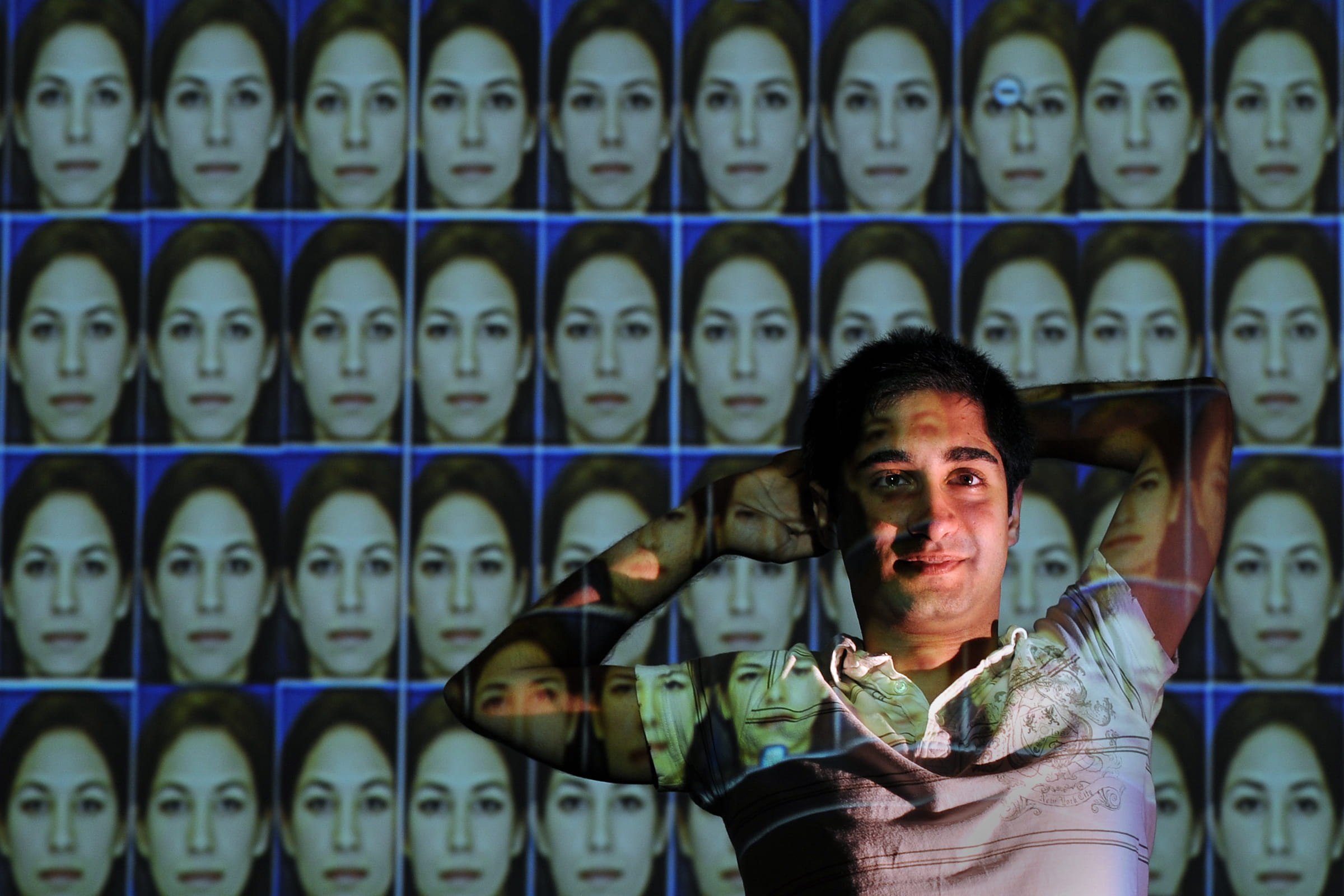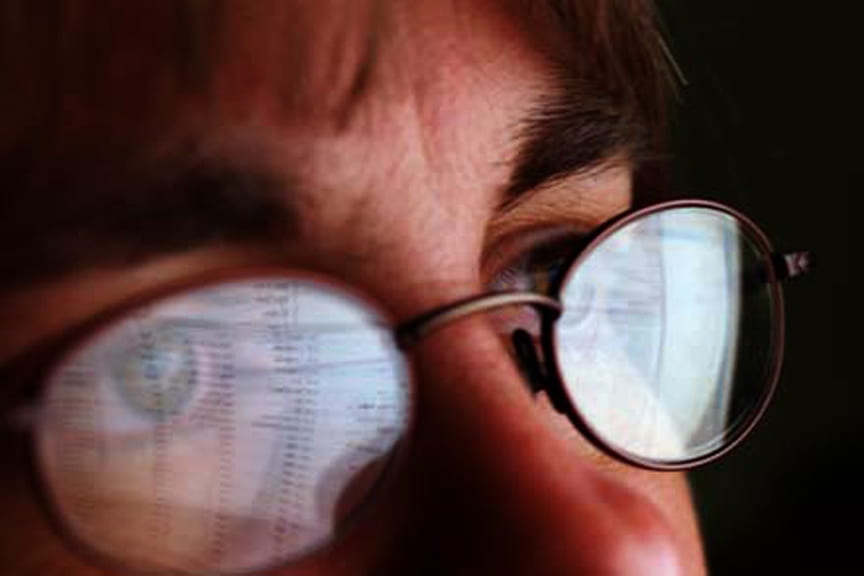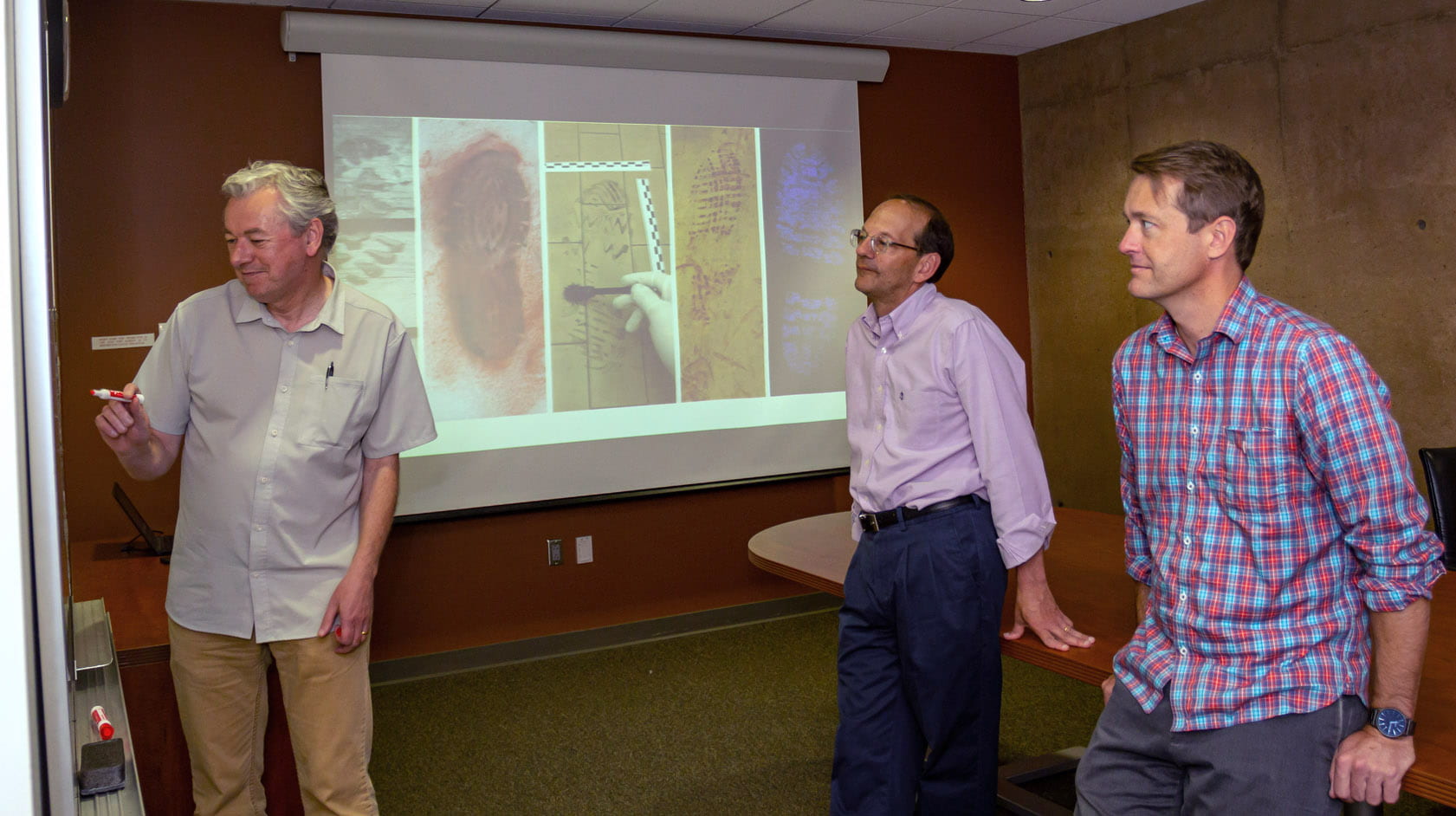Chasing beauty

UC Irvine alumnus Koohyar Karimi ’08 thinks he’s found the perfect woman. She has even features, eyebrows that arch at just the right angle, and – as he poetically puts it – “the distance from her subnasale [nostrils] to the cupid’s bow of her lips is exactly one-third the distance from the parting of her lips to her chin.” True, when describing the fairest of them all, Karimi comes up short on romance, but he can explain: His lady friend isn’t real. She’s a computer-generated composite.
Karimi created her while pursuing his bachelor’s in biological sciences and working on a study led by Dr. Brian Wong, biomedical engineering professor and director of Facial Plastic Surgery, that aims to “quantify facial beauty.”
By combining images of real women using special morphing software, then “breeding” their features to create successive generations of increasingly attractive images, the research team has engaged in a Darwinian pursuit of the flawless face.
So what’s the purpose? Are they building a fembot?
“Knowing what defines a beautiful face has immense value in many fields. In advertising, it’s important to know what the public finds appealing,” Wong says.
Plastic surgeons also can use the data to rebuild or improve people’s appearance. The researchers recently published initial findings in the scientific journal Laryngoscope, which reports on head and neck disorders.
Efforts to calculate beauty are centuries old, from the time of Leonardo da Vinci, who studied proportions of beautiful faces, to the 20th century, “when a bunch of people with protractors were measuring lips,” Wong says.
His study fine-tunes such measurements using computer technology. Still, there’s a human element that has proven challenging for the student researchers – including embarrassing encounters with real-life females.
First, Karimi and another alumnus, Zlatko Devcic ’08, had to troll UCI asking women to pose for a photo. Responses to their scientific inquiry were pretty uniform:
“They thought we were creeps,” Karimi jokes.
Eventually they recruited 30 subjects by assuring them only researchers would see the original pictures – “so we don’t hurt anyone’s feelings.” Recruiting became much easier, says Wong, once sophomore Natalie Popenko, senior Leann Manis and four other women joined the research team.
Researchers morphed the photos into 150 synthetic portraits, displayed the images in a classroom and asked students to rank them by attractiveness. Then Devcic posted the images on Hot or Not.com, a Web site where users score photos based on people’s looks.
“People didn’t know they weren’t real,” Karimi says. “We had to come up with names for them like Barbie Doll and Lindsay Hilton.”
Hot or Not results mirrored classroom input, giving researchers a timesaving tool for measuring attractiveness. They plugged the scores into a mathematical formula, or “genetic algorithm,” developed by Wong and UCI evolutionary biologist Adam Summers to pare off the top scorers and produce the next generation of faces.
“It’s survival of the prettiest,” Karimi says.
By the time they got to the fourth generation, the images were “really scary.”
“Even though we started with different faces, they ended up looking the same,” he says. “They had the same full lip, brow style, flawless skin and perfectly aligned features.”
For phase two, they’re starting with 300 photos of real women instead of 30 to see if a larger group yields similar results. They’ve also separated photos by ethnic background, to test the notion that beauty ideals vary among groups. Eventually they’ll study men, too.
While applying to medical school, Karimi still works on the project – focusing on profiles while others home in on lips, chins and other features. Pursuing the ideal face has altered his view of beauty.
“Now when I look at women, I analyze their features and wonder if I could morph them,” he says. “When I see pictures of models, I understand why people think they’re beautiful.”
Yet he also recognizes that what appeals to one person might not appeal to another. And, as Wong notes, faces like Julia Roberts’ might have individual elements out of proportion, but still be stunning. Proof, indeed, that beauty remains in the eye of the beholder.
Originally published in Vol. 1, Iss. 1 of ZotZine


